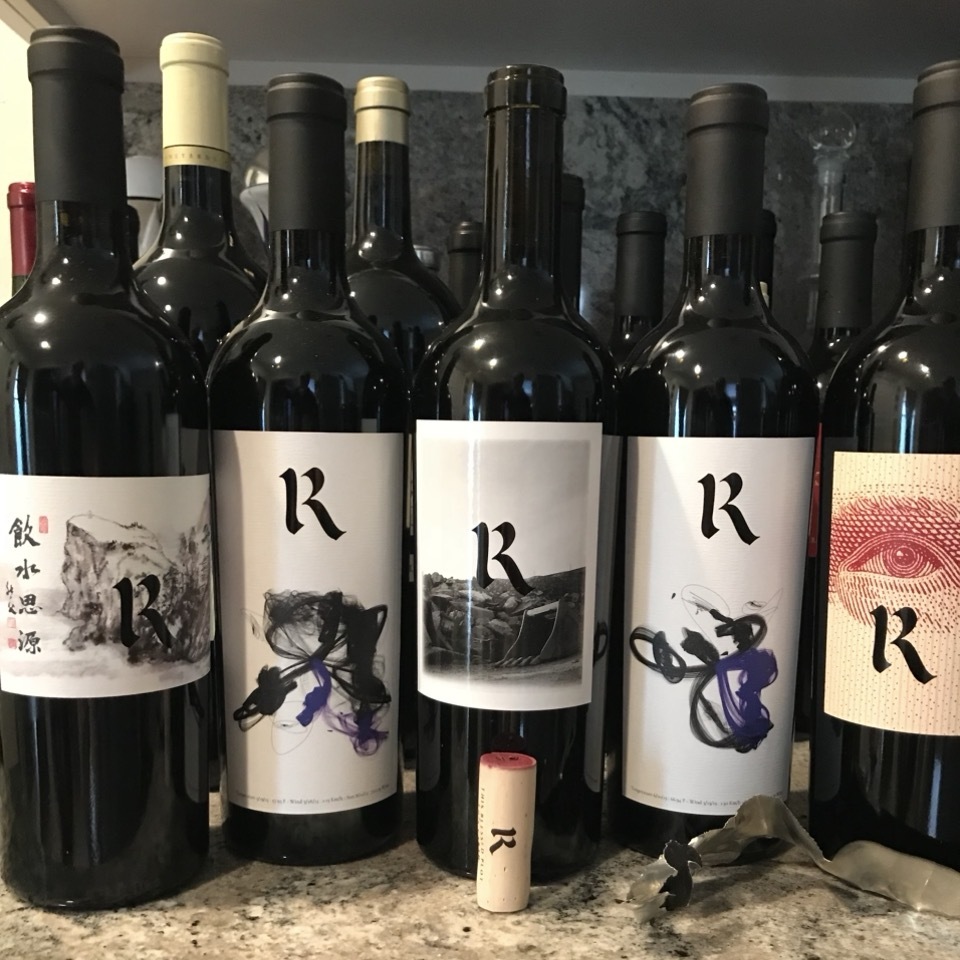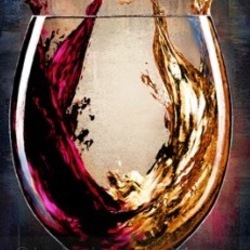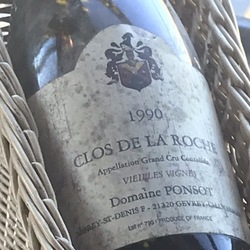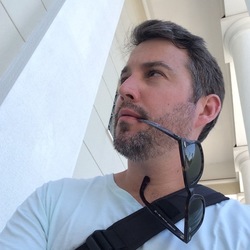Abrera S. A.
Billecart-Salmon
Brut Rosé Champagne Chardonnay Blend

I. et S. Bernaudeau
Les Onglés Chenin Blanc 2015
Float like a butterfly sting like a bee — 7 years ago
Castello di Verduno
S-ciopét Brut Rose Pelaverga 2012
A bit reddish golden color; peach and apple on the move with hint red gooseberry; some tannins. Great surprise for Italian sparkling. — 8 years ago
Château Gruaud Larose
Saint-Julien Red Bordeaux Blend 2006
£99 Magnum that RP said "one of the most disappointing St.-Juliens I tasted 84pts" well I think he should retry the great numpty 😜 Still could do w/ 2-5yrs 👍 Great nose but palate still a little tight
🍇 63% Cab S, 25% Mer, 9% Cab F & 3% Pet V
🍷 Opaque ruby
👃 Smokey oaky earthy farmyard through shy blackcurrant & spiced plum w/ minerals, leather, musky cellar & wet leaves - fab nose 👍
👄 Med earthy mocha blackcurrant body w/ dry tannins & touch of tart cherry
🎯 Med dry earthy blackcurrant finish — 9 years ago
Rioja Vega S. A.
Gran Reserva Rioja Tempranillo Blend 2009
A spicy Rioja. Dense and delicious. — 10 years ago
Château Montrose
Saint-Estèphe Cabernet Sauvignon Blend 1975
Neck fill and cork tight and sweet sounding when you pull it. You almost can tell if a bottle will be good by how the cork comes out. Juicy still with dark cranberry notes, pure of fruit and melted tannins and acid backbone. Love it as not sure how these 75's would have aged. — 10 years ago
Tenuta San Guido
Bolgheri Sassicaia Cabernet Sauvignon Cabernet Franc 1985
1985 Sassicaia. Second red wine at Redd Wood lunch w A, S, and K. This wine was perfect. Epic. We could not believe how perfect this wine was drinking. Thoroughly enjoyed it- it was enjoyable the way truffles are- hard to describe, but pleasing to all relevant senses. — 10 years ago
Podere Rocche dei Manzoni
Vigna Cappella S. Stefano di Perno Barolo Nebbiolo 1995
Intensely aromatic. Black tea, rose petals, red cherry and tar. Every component feels accentuated but in a very balanced way. Lots of fruit, good amount of acid, solid tannic grip and long finish. — 11 years ago
Giuseppe Rinaldi
Cannubi S. Lorenzo Ravera Barolo Nebbiolo 2004
A little stewed on the nose but tell tale pure finish... — 11 years ago
Katogi & Strofilia S. A.
Katogi Averoff Agiorgitiko Blend 2008
Great Greek wine — 12 years ago
Fanetti
Tenuta S Agnese Riserva Vino Nobile di Montepulciano Sangiovese 2013
Château d'Armailhac
Pauillac Red Bordeaux Blend
Mmm this is gunna be good. It's tight and shut down at the moment, but this has a dark purple hue to it - way more color than previous vintages of d'Armailhac that I've had. Some cedar and graphite mixed with herbs and black fruit on the nose. Palate isn't as tannic as expected, but definitely needs more time to hit its stride. Very well-made however - I bet with a 3-hr decant it'd be fab. Good value as most of the '14's have been. — 8 years ago
Beaulieu Vineyard
Reserve Tapestry Napa Valley Cabernet Sauvignon Blend 1996
I under estimated this wine last weekend as I didn't decant it. Some concern over a 20 year old CA Cabernet. However, this wine is still all there. There's something special when the right wine hits 20 years of age and there is simply no shortcut or substitute. The evolution in this wine is spectacular. Ripe plum, blackberries, dark raspberries, cooked strawberries, amazing baking spices, sweet dark earth and minerals, swede and soft leather, tobacco leaf, great balance, an amazing elegant finish and perfect acidity. I would have not expected this much from a Tapestry but there you go!!! Holding my 07's for much longer than I expected based on this 96. — 9 years ago
J. Hofstätter
Barthenau Vigna S Urbano Pinot Nero 2009
Acidity balanced with fruit. Not overpowering. Wonderful with fish. A lovely wine. Best to drink now. — 10 years ago
V. S. A. Limoux
Grande Cuvée 1531 de Aimery Méthode Traditionnelle Crémant de Limoux
Very good little limoux and impressive for the price — 11 years ago
Frank Family Vineyards
Reserve S&J Vineyard Petite Sirah 2010
From S J vineyard very dark with blackberry coulis fruit violet floral and dark spices very big and brawny with sweet sappy fruit dark spices and a fresh finish excellent — 12 years ago
Joseph Phelps Vineyards
Insignia Estate Grown Napa Valley Cabernet Sauvignon Blend 1974
This was a vertical of 38 vintages to celebrate Joseph Phelps Insignia 40th anniversary! The 74' and 77' were the wines that came on top from the 70's vintage. — 12 years ago
Guido Porro
Vigna S. Caterina Barolo Nebbiolo 2006
Fresh and bright with red cherry and plum fruit accented with tar, floral and brown spice notes. Palate has lovely texture with nice fruit and round tannins. Lacking a touch of depth and complexity that I would have expected with the bottle age. While not profound, very pleased to have 6 more bottles. — 7 years ago
Azienda Agricola Roberto Voerzio
Vigneti S. Francesco Fontanazza Langhe Nebbiolo 2007
like a Barolo, aged very well after 11y, Nose very attractive and attack and mid palate very firm and full — 7 years ago
Château Pichon Longueville Comtesse de Lalande
Pauillac Red Bordeaux Blend 2005
A surprising lighter style Pauillac for an 05 but @ £90+ it’s in a nice place, but a touch disappointing compared to others such as the amazing 2000 😁
🏵 92-93 points
🍇 64% Cab S, 29% Mer, 6% Cab F, and 1% Pet V
🍷 Blackened ruby
👃 Warm oak, soggy earthy leaves, gravel, minerals, pencil lead through dark berries & plum w/ mocha
👄 Med body of smooth rich blackcurrant, damson & red/black currants w/ a mineral mocha & mineral undertone
🎯 Med red & dark berry kick w/ touch dry minerals, light mocha & liquorice
— 7 years ago

Château Brane-Cantenac
Grand Cru Classé en 1855 Margaux Red Bordeaux Blend 2005
I have a six-pack of this 05. I thought after 10 years in bottle, it would be interesting to check in on its evolution. While tasty, I’ll wait another 8-10 to open another. Even after 2-3 hours in the decanter, it’s still a very young adolescent. On the nose, slightly sour blackberries & dark cherries, dark currants, baked black plum, haunting blue fruits, anise, whiff of spice, steeped tea, dry stones, dry crushed rocks with dry top soil, caramel, vanilla with fresh & dry red florals. The body is thick & full. Tannins are starting to round out. It’s velvety on the palate. The fruits are; bright, fresh & ripe and really show the greatness of the 05 vintage. Dark currants, blackberries, dark cherries, baked black plum, haunting blue fruits, baked strawberries, cherries, raspberries on the long set, dark spice, clay & loamy dry top soil with crushed rocks, dry stones, cigar with ash, graphite, dry stems, slight herbaceous character, mint, used leather, clove, caramel, vanilla, fresh & dry red florals with violets. The round acidity is about perfect. The structure and length are still strong. The balance is in harmony. As for the long finish, it’s lush, ruby, rich and well polished. Photos of; Chateau Brane Cantenac, large wood vats, Henri Lurton and Estate vines. Producer notes and history...Chateau Brane Cantenac began in the early 17th century. At the time, the estate was known as Domaine Guilhem Hosten. Even that far back, wine was produced from the property. In fact, the wine was so highly regarded it was one of the more expensive wines in Bordeaux. It sold for almost as much money as Brane Mouton. This is interesting because of who went on to buy the vineyard in the 1800’s. The Baron of Brane, also known as “Napoleon of the Vineyards”, purchased the Chateau in 1833. At the time of the sale, the estate was called Chateau Gorce-Guy. To get the funds needed to purchase the Margaux vineyard, the Baron sold what is now called Mouton Rothschild, which was at the time of the sale, known as Chateau Brane-Mouton. Not such a good move with hundreds of years in hindsight! In 1838, the Baron renamed property taking his name and the name of the sector where the vineyards were located and called it Chateau Brane Cantenac. The Chateau later passed to the Roy family, who were well-known in the Margaux appellation in those days, as they owned Chateau d’issan. Moving ahead to 1920, the Societe des Grands Crus de France, a group of merchants and growers that owned several chateaux located in the Medoc including; Chateau Margaux, Chateau Giscours, and Chateau Lagrange in St. Julien, purchased Chateau Brane Cantenac. Five years later, M. Recapet and his son-in-law, François Lurton, took over Brane Cantenac along with Chateau Margaux. Lucien Lurton (the son of François Lurton) inherited Brane Cantenac in 1956. Today, the estate is still in the hands of the Lurton family. Brane Cantenac is owned and run by Henri Lurton. After being given the responsibility of managing Brane Cantenac, it was under the direction of Henri Lurton that large portions of the vineyard were replanted. Vine densities were increased, the drainage systems were improved and the plantings were also, slowly changed. The vineyard of Brane Cantenac is planted to 55% Cabernet Sauvignon, 40% Merlot, 4.5% Cabernet Franc and .5% Carmenere. Carmenere was used for the first time in the 2011 vintage. The only other Chateau I know that still uses Carmenere is Clerc Milon. The 75 hectare Left Bank vineyard of Brane Cantenac is essentially unchanged since it earned Second Growth status in the 1855 Classification. At least that is the case with the 45 hectares used to produce the Grand Vin of Brane Cantenac. Those 45 hectares are planted surrounding the Chateau. Those vines are located just in front of the Cantenac plateau and are the best terroir that Brane Cantenac owns. They have other parcels, which are further inland and much of those grapes are placed into their second wine, Le Baron de Brane. Those additional hectares can be divided into 3 main sections. Behind the Chateau, they have 15 hectares of vines on gravel and sand, 10 hectares across the road with sand, gravel and iron and a 13 hectare parcel with gravel called Notton, which is used for their second wine. The vineyard is planted to a vine density that ranges from 6,666 vines per hectare on the plateau and up to 8,000 vines per hectare for the vines located behind chateau, in their sandier soils. The higher levels of vine density are always found in the newer plantings. The terroir of Brane Cantenac consists of deep gravel, sand and clay soil. Experiments in the vineyards are currently looking at becoming more organic in their vineyard management. Today, more than 25% of Brane Cantenac is farmed using organic farming techniques. It is expected that over time, the amount of hectares farmed with organic methods will be increased. Brane Cantenac has gone through 2 relatively recent modernization’s in 1999, when they added began adding the first of their smaller vats to allow for parcel by parcel vinification and then again in 2015 when they completed a much more complete renovation of their cellars and vat rooms. While Brane Cantenac is a traditional producer, they are no stranger to technology as they were one of the first estates to embrace optical grape sorting machines. In very wet vintages, they can also use reverse osmosis. To produce the wine of Chateau Brane Cantenac, the wine is vinified in a combination of temperature controlled, traditional, 22 oak vats, 18 concrete tanks and 20 stainless steel vats that vary in size from 40 hectoliters all the way up to 200 hectoliters, which allows for parcel by parcel vinification. 40% of the fermentation takes place in the oak vats. The oldest vines are vinified in vats that are selected to allow for separate parcel by parcel vinification. The younger vines are vinified more often together in the same vats. However, the Carmenere is entirely micro-vinified, meaning that those grapes were completely vinified in barrel, using micro-vinification techniques. This can also happen because the amount of grapes produced is so small. Some vats can be co-inoculated, meaning they go through alcoholic fermentation and malolactic fermentation simultaneously. At Chateau Brane Cantenac, malolactic fermentation takes place in a combination of French oak tanks and barrels. The wine of Brane Cantenac is aged in an average of 60% new, French oak barrels for 18 months before bottling. The initial 2 months of aging is done with the wine on its lees, which adds more depth to the wine. There second wine is Le Baron de Brane. Le Baron de Brane is not new. In fact, previously, the second wine went under the name of Chateau Notton, which took its name from one of the main parcels where the grapes were planted. During the late 1950’s and into the 1960’s, having a second wine was important as the estate declassified 3 vintages, due to extremely poor, weather conditions in 1956, 1960 and 1963. Production of Chateau Brane Cantenac is about 11,000 cases per year. — 8 years ago

Villa S. Anna
Chianti Colli Senesi Sangiovese 2010
Everything could ask for from a Chianti. — 11 years ago






















Somm David T
Independent Sommelier/Wine Educator
The Seasonal Grand Opening of the D&S Lounge. That’s going to require some BSR to celebrate.
As well, going to detail notes of this with my new Riedel Vintage Sommelier flutes, center picture. I’ve been wanting to write notes on this Champange in the new flutes as I wanted to do it one I am very well acquainted. As @Paul T- Huntington Beach & @Severn Goodwin have pointed out the many times I have posted it.
The nose is definitely more vibrant. Tangerines lead where they haven’t in my previous notes now using the new flutes. More pink rose petals, blood orange, pink grapefruit, leaner; strawberries, watermelon, warmed, creamed raspberries, apricots & cherries, liqueured marmalade, hints of scorched rhubarb, lemon/lime aid, chalky powder, delicate, grey volcanics, sweet, sea spray, bread dough, baguette crust, touch of brown sugar/molasses light, haunting, dry herbs, limestone and bouquet of; white, red, pink & orange roses.
The body is round with some gummy or gluiness. Everything about the mouthfeel is more delicate and softer. The bubbles smaller & more refined. Pink rose petals, blood orange, pink grapefruit, leaner; strawberries, watermelon, warmed, creamed raspberries, apricots & cherries, liqueured marmalade, hints of scorched rhubarb, almost a date presence on the long set, chalky powder, delicate, grey volcanics, sweet, sea spray, lighter intensity of white spices but, still has the heat & palate penetration, bread dough, baguette crust, touch of brown sugar/molasses light, haunting, dry herbs, limestone and bouquet of; white, red, pink & orange roses. The acidity is all fresh & lively with this cuvée. But, even that seems better. The finish is as always; well knitted & balanced, polished, fresh, persistent and never disappoints.
Photos of; the best room in our house for 6+ months of the year, our backyard. Aka, the D&S Lounge on Memorial Day Weekend 2020. — 5 years ago